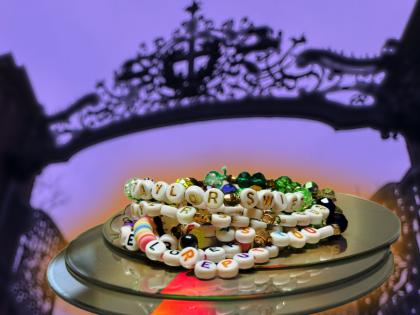Rust never sleeps. Neither do its chemical cousins, the so-called "reactive oxygen species" whose oxidizing properties in the human body can cause widespread cell damage. Antioxidants, such as vitamins E and C, can intercept these oxidizing substances ("free radicals") by binding to them before they reach cells, thereby preventing damage to human tissues. But no matter how much antioxidant you take, oxidizing substances penetrate this line of defense. In human cells, these agents slip through the antioxidant net about 10 million times a day. Under this kind of attack, what's a poor strand of human DNA to do?
In fact, there is a second line of defense against reactive oxygen species. "The body has its own mechanism of self-repair," says professor of chemistry Gregory Verdine, who with doctoral students Steven Bruner and Derek Norman studies the phenomenon of how a special protein called hOGG1 ("hog one") actually fixes damaged DNA.
"Think of vitamins as small molecules that work by reacting directly with oxidants," says Verdine. "The protein hOGG1 is a large molecule antioxidant, and it acts in a different way, by working with the products of oxidation. Once oxidants have reached their target and dropped their payload on DNA," he continues, "hOGG1 comes along--it checks DNA constantly--and finds the damage, and snips it out."
Verdine's team has, for the first time ever, made an image of this extraordinary process by catching the protein in action. Because it's not possible to make high-resolution images of single molecules, Verdine explains, the team needed to work with a collection of them. Using genetic engineering, he and his students created bacteria that generate hOGG1 in huge quantities. They then chemically synthesized DNA "indistinguishable from what you find in human cells," says Verdine. The hOGG1 protein and DNA were combined, and the resulting mixture was crystallized. "In a crystal," Verdine notes, "every molecule has the same orientation, so they create a uniform, repeating pattern. That way, when you shoot X-rays at the crystal, you get the cumulative signal from every molecule."
Once Verdine and his students had established on Harvard's equipment that their crystal would generate a strong signal, they took it to a powerful synchrotron (particle accelerator) at Brookhaven National Laboratories. There they shot through the crystal a beam of x-rays so energetic that Verdine says, "If you put your hand in, it would fry instantly." The electrons of the crystal diffract the x-rays, creating a pattern.
With the aid of computers, Verdine worked backward from this pattern, called an electron density map, to create a model of the molecule. Because the model shows every atom, however, it is too complex to create an easily recognizable image, so Verdine has created a simplified version. The result shows a strand of the now familiar double helix with the protein hOGG1 (in red and blue) poised over it, caught in the act of DNA repair.








